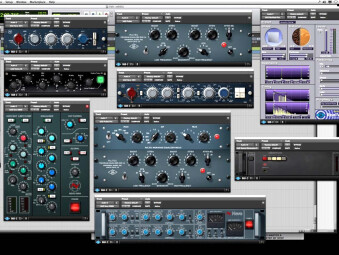Sometimes the best way to make people really grasp an idea is to resort to a fitting metaphor. That's why, today, I'll show you a way to visualize a mix that ought to allow you to understand the whole thing better.
Jigsaw falling into place
The idea behind it is relatively simple and it should easily resonate with almost anybody: What if mixing was like putting together a puzzle? When you think about it, it’s not that different if you consider the song as the picture you have to reassemble, and the individual tracks as the puzzle pieces. The problem is, in this case the puzzle pieces haven’t been perfectly jigsawed to fit each other at a predefined place. What goes at the bottom and what goes at the top? Left or right? And next to what? Not to mention the picture itself, what it represents, what color it has. And what about the depth of field and contrast?
It’s the audio engineer’s job to sculpt the different pieces so that they fit perfectly together to form the right picture. He or she has different tools available to cut and place the different elements in the 3D space: Faders, pan controls, EQs, dynamic processors, reverb and delay, etc. The thing is, none of these tools work independently from the rest. For example, it’s not enough to use a pan pot to place an element three-quarters left or to turn an EQ knob to make two elements bond together. It’s the clever combination of all the tools available that will define the place of each element in the whole. To give you an idea, here you have the different application fields of each of these tools in reference to our sonic puzzle:
- Volume faders: Vertical placement, articulation, depth
- Pan controls: Horizontal placement, depth, articulation, color
- EQ: Articulation, vertical and horizontal placement, depth, color, contrast
- Dynamic processors: Vertical placement, articulation, contrast, depth, contrast, color
- Reverb, delay & co: Depth, horizontal placement, vertical placement, articulation, color
- Harmonics generators: Color, contrast, vertical placement, depth, horizontal placement
Do note that, contrary to what you might be thinking, I didn’t just list the different application fields of each tool randomly. I tried, as far as possible, to classify them in decreasing order of influence.
In the next episode we’ll develop this “puzzling” analogy a bit further, considering that it will become one of the main building blocks upon which we will build the theoretical framework of this article series. Beware that this approach to mixing implies a very important thing: The pieces of the puzzle don’t necessarily have to be “beautiful, ” what’s important is their role in the puzzle. And the same goes for the recordings of the instruments: The only crucial factor is the music as a whole.
More on this next week…!

